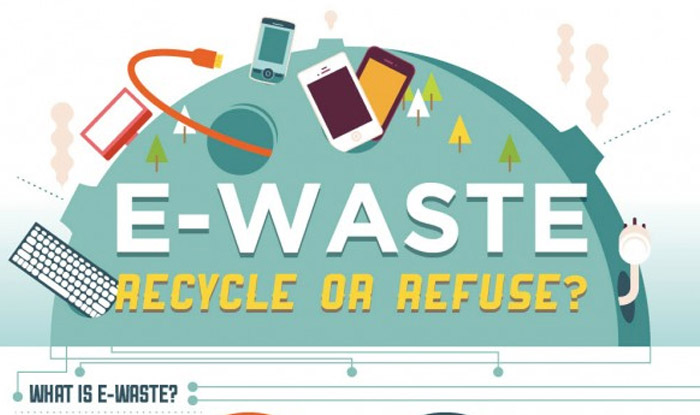As the usage of electronics increase with the passage of time, the waste that is caused by them is also increasing. The term e-waste is referred as electronic waste which is caused by dumping or discarding the electronics in an inefficient manner. Consumer electronics mostly cause such waste because people keep on buying the latest devices and dump or throw away the old ones without realizing the harm that is caused by them not only to the environment but also to the mankind.
According to the info-graphic the research tells us that the e-waste is not only caused by the computer but also equipment like mobile phones, televisions and different home appliances.
The infographic tells us that an average user changes his cell phone every 18 months which means that the rate of e-waste is increasing rapidly. More than 130m mobile phones are put to trash every year in the US. Out of 135m only 17m cell phones are recycled or disposed properly.
The disposal of such electronics is really important because the chemicals these devices release after getting dumped in the landfills pollute the environment and bring harmful diseases alongside them.
Reusing electronics is a good option. You can always give away the old or outdated devices to someone else. On the other hand, recycling them would make the environment healthy in many ways but throwing them away or piling those up in your junkyard won’t bring any benefit to you or others around you.
We need to create awareness about this matter via social media platforms. Initiatives must be taken like starting a recycling campaign and organize little events which will compel the consumers to recycle, reuse or refuse the electronics.
Image: Source



Leave a Reply